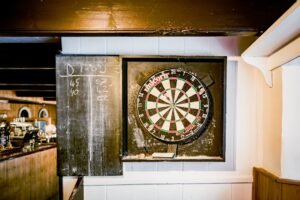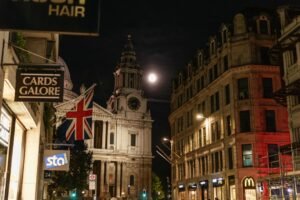

Norway’s Rich History: Must-Visit Cultural and Historical Sites
People come from all over to see Norway’s amazing mix of nature and culture. It might be the stunning fjords, the Viking history, or the special UNESCO sites. Norway has eight places on the UNESCO World Heritage List. This shows the country’s deep Nordic culture and history.
In 1980, the detailed Urnes Stave Church joined the list. It has been kept safe all these years. Then, there’s Rjukan-Notodden, showing Norway’s industrious past. These are just a few of the sites that tell Norway’s story.
The famous Bryggen in Bergen won UNESCO’s approval in 1979. It shows how important Norway’s old buildings are. Also, the Alta petroglyphs give us a look at life thousands of years ago. Nature like the Geirangerfjord and Nærøyfjord became part of the list in 2005. They add to the story of innovation and history in Norway. This is a land full of stories waiting to be explored.
Table of Contents
ToggleBryggen in Bergen: A Historical Trade Hub
Bryggen is in Bergen, a famous city in Norway. It was founded in 1070 by King Olaf III. Bryggen grew fast into a big center for business. It became a key part of Bergen with its strong trade links with Europe.
Overview of Bryggen’s History
In Norway’s west coast city, Bergen, Bryggen is known for its unique buildings. Many fires hit the area over time. Despite this, Bryggen was rebuilt carefully. You can still see 62 old buildings there. These buildings show how Hanseatic merchants once lived and worked.
UNESCO World Heritage Status
In 1979, Bryggen became Norway’s first UNESCO site. This shows its big role in Bergen’s history. Visiting Bryggen is a must in Bergen. It shows the unique way of life in a Hanseatic town from long ago.
Cultural Exchange and Trade
The Hanseatic League helped Bryggen become a big trading place. It had strong links with Germany. Today, we can see its impact in the local language. Bryggen now faces risks like fires and sea-level rise. Laws and local entities work to protect it for the future.
Urnes Stave Church: A Medieval Wooden Marvel
In the Sognefjord area stands the ancient Urnes Stave Church. It’s a key example of medieval craftsmen’s skill. Built around 1140, it’s known for its detailed carvings. These include both old Norse and Christian symbols. Being the oldest of Norway’s 28 stave churches, Urnes is a treasured part of Norway’s architectural history.
Architectural Significance
Urnes Stave Church is famous for its details. It shows a mix of old Norse and Christian influences. This blend tells the story of Norway’s shift to Christianity in the 11th and 12th centuries. Other stave churches like Borgund, Hopperstad, and Heddal show off Norway’s woodworking heritage. Each is special in its own way.
Preservation and Accessibility
Preserving these old wooden churches is very important. They are at risk from nature and fires. Since 1881, the National Trust of Norway has looked after Urnes. In 1980, UNESCO made it a World Heritage Site. Today, visitors can see this amazing church. Its preservation shows how Norway values its past.
| Stave Church | Established | Unique Features | Location |
|---|---|---|---|
| Urnes Stave Church | circa 1140 | Romanesque style, intricate carvings | Sognefjord area |
| Borgund Stave Church | circa 1180 | Highly preserved structure | Laerdal |
| Hopperstad Stave Church | circa 1130 | Extensive biblical carvings | Vik in Sogn |
| Heddal Stave Church | circa 1240 | Largest stave church, detailed roof decorations | Notodden |
| Fantoft Stave Church | Rebuilt 1997 | Reconstructed after fire | Bergen |
Exploring the Geirangerfjord and Nærøyfjord
Geirangerfjord and Nærøyfjord show off Norway’s stunning natural beauty. These UNESCO fjords are famous for their rocky cliffs and waterfalls. They became a UNESCO World Heritage Site in 2005. The area’s beauty spans 500km, boasting fjords that reach from 250m to 2.5km wide. Their narrow, steep cliffs rise up to 1,400m and dive 500m below sea level. Beyond their looks, the fjords are full of diverse wildlife and marine life.
Natural Beauty and Geological Wonders
The Norwegian Fjords are gems of nature’s handiwork. Geirangerfjord measures 60km, and Nærøyfjord covers 100km. Glaciers, waterfalls, and high mountains make the fjords breathtaking. They’re home to unique land and sea life, adding to their natural diversity.
Cultural Landscape: Farmhouses and Outhouses
Old farms stand as tales of the past in Geirangerfjord and Nærøyfjord. Though not used anymore, these farmhouses show us Norway’s rural history. They blend beautifully with the fjords’ wild nature. This mix tells a story of the balanced life Norwegians have led with their surroundings.
Visiting Norwegian Fjordsenter
Geiranger’s Norwegian Fjordsenter tells visitors all about the area’s natural wonders. It’s a great place to learn about the fjords’ geological makeup and history. Inside, you can explore exhibits on the area’s formation, its wildlife, and the people who’ve lived here. A must-visit place to understand what makes Geirangerfjord and Nærøyfjord so special.
Røros Mining Town: A Glimpse into Industrial History
In the heart of Norway lies the fascinating Røros Mining Town. It shows us Norway’s strong industrial past. In 1980, it got on the UNESCO World Heritage List. You can still see the town’s original streets and about 2,000 wooden houses from the 1600s.
The Expansion of the World Heritage Site
In 2010, the World Heritage Site grew to include the Circumference. This showed how humans and nature worked together. The new part points out the old mining ways. They shaped Røros and show little change since the mines closed. Røros stands as a symbol of Norway’s industrial past and its link to Scandinavia.
Urban Agriculture in the 1600s
Røros is known for more than mining. Back in the 1600s, people farmed in a special way in town. Their smart farming helped the town and its mines thrive. A special route was used to bring in goods during the snowy months. This helped the town succeed during winter.
| Feature | Details |
|---|---|
| Wooden Houses | Approximately 2,000, reflecting historical architecture |
| Cultural Influences | Diverse origins including Germany, Denmark, Sweden, and Norway |
| Mining Operations | Operated for 333 years |
| UNESCO Designation | Inscribed in 1980, expanded in 2010 |
Røros is carefully protected under Norway’s laws for heritage and building. This thoughtful care keeps its history alive. It’s a key part of Norway and Scandinavia’s mining history.
Rock Art of Alta: Norway’s Ancient Petroglyphs
Far north of the Arctic Circle, at the head of the Alta Fjord, is a unique collection of ancient petroglyphs. The Rock Art of Alta is a highlight of prehistoric art in Northern Europe. It shows us the world of ancient hunter-gatherers.
Historical Significance of Petroglyphs
45 sites in five areas tell a story from 4200 to 500 BCE. From 5000 B.C. to about the year 0, Alta was a central place. The carvings and paintings show daily life and religious views. They include animals, human figures, and events from long ago.
Visitor Experience and Guided Tours
Visiting the Rock Art of Alta is like taking a trip back in time. Most of the carvings are in Hjemmeluft, where you can really feel the past. The Alta Museum offers guided tours during summer. They help visitors understand the ancient art better.
At the museum, you can see old carvings made clearer with dye. There’s an entrance fee and an option for an audio guide. Buses from Alta airport run hourly, making it easy to visit this World Heritage Site.
This rock art connects us not only to Alta’s past but also to the Sami culture. The area has over 6,000 carvings depicting many scenes. It’s a key place to explore ancient petroglyphs in Norway.
The Vega Archipelago: Sustainable Living on the Coastal Frontier
The Vega Archipelago is made up of over 6,500 islands, islets, and reefs. It shines as a place where people live with nature. Its history shows how people and the environment can work together. Since 2004, it’s been a UNESCO World Heritage Site, showing how special this place is.
Harvesting Eider Ducks and Its Cultural Importance
The Vega islands have a unique way of living and working with nature. For centuries, people have been gathering eiderdown, the soft feathers from eider ducks. This tradition highlights a peaceful way people and wildlife can live together. It not only helps the people who live there but also the environment.
Bird Species and Natural Environment
This place is a haven for birds, with more than 230 species finding homes here. The various habitats like Coastal Heathland and meadows add to the many types of wildlife. There are also special habitats for rare species. The archipelago works hard to protect and care for these environments. That’s why it’s a popular place for studying birds and nature.
The future of the Vega islands faces some challenges, like possible sea level changes. But, by keeping a close eye and making changes when needed, it can continue to be a model for living in tune with nature.
Struve Geodetic Arc: A Scientific Marvel
The Struve Geodetic Arc is an amazing example of worldwide teamwork in science. It was started by Friedrich Georg Wilhelm von Struve, a German astronomer, in the 1800s. The main goal was to measure a big line from one end to the other, which helps us know Earth’s size and shape better. Today, it’s a UNESCO World Heritage site, honoring its importance in both science and history.
Historical Context of the Project
This project was the first of its kind to tie together geodetic points across ten countries. It went from Norway to the Black Sea. Doing this work from 1816 to 1855, different countries came together. They new worldwide effort helped us learn more about Earth’s size. This shows how important teamwork is in science.
Norwegian Measuring Points
Places in Norway like Meridianstøtten in Hammerfest played a key role. They helped make sure the Struve Geodetic Arc was accurate. Norway’s efforts to remember and care for these places show their commitment to science. It’s so future generations can see and learn from their historical role.
| Location | Distance from Arctic Circle | Notable Features |
|---|---|---|
| Meridianstøtten, Hammerfest | 450 km south | Historic geodetic point |
| The Icehotel | 200 km north | Renowned ice sculptures |
| Hotel Fjället | 250 km north | Sauna, Midnight Sun, Northern Lights |
| Scandic Hotel Kiruna | 200 km south | Nordic design, sustainable materials |
| Clarion Hotel Sense, Luleå | 400 km south | Fitness center, free Wi-Fi |
Global Scientific Significance
The Struve Geodetic Arc marks a key moment in geodesy. It shows how powerful global cooperation can be in science. Working together helped make big steps in understanding our planet. The memorable efforts in making the arc show a shared love for science. And it proves how united worldwide efforts, like this one, can radically change geodesy.
Conclusion
Norway takes you on a deep historical journey packed with over a thousand years of story. It all starts with Viking times, goes through medieval grandeur, and leaps into modern industry. In Oslo, every step leads you to over 1000 years of history.
You’ll see The Royal Palace’s royal beauty and the strong Akershus Fortress from the 13th century. Then, Oslo’s Viking Ship Museum shows 9th-century Viking ships in amazing shape. Plus, places like the Holmenkollbakken Ski Jump offer views of Oslofjord. This city also shares its culture and art at the Norsk Folkemuseum and Emanuel Vigeland Museum.
Trondheim’s medieval architecture tells stories of the past. Stavanger shows how deeply Norway is connected to the sea. And the Northern Lights are a natural show that pulls people up north.
In this Nordics world, you touch Viking strength and peaceful farm life. The historic sites, like Steinvikholm Castle, keep stories alive for tomorrow. Norway is truly a place where culture, history, and nature meet.
Source Links
- https://www.visitnorway.com/places-to-go/unesco-world-heritage-sites/
- https://www.historyhit.com/guides/historic-sites-in-norway/
- https://www.kimkim.com/c/guide-to-norway-s-best-cultural-and-historical-experiences
- https://whc.unesco.org/en/list/59/
- https://www.guidester.com/bergen-a-journey-through-history-culture-and-natural-wonders/
- https://grownuptravelguide.com/norways-stave-churches/
- https://www.campervannorway.com/blog/things-to-do/stave-churches-norway
- https://www.fjordtours.com/en/norway/things-to-do/sightseeing/tourist-attractions/unesco-world-heritage-sites-norway
- https://whc.unesco.org/en/list/1195/
- https://nlsnorwegian.no/cultural-treasures-of-norway-museums-historic-sites-and-local-traditions/
- https://www.rachona.com/en/roros-mining-town-and-the-circumference/
- https://whc.unesco.org/en/list/352/
- https://www.worldheritagesite.org/list/Rock Art of Alta
- https://nordnorge.com/en/artikkel/rock-carvings-in-alta-7000-year-old-rock/
- https://www.vega.kommune.no/_f/p1/ie01a966b-f871-43c2-8750-c4ec4e06391a/appendix2_nibio_forinsteadheritage_30mar2022.pdf
- https://whc.unesco.org/en/activities/?sdci&mode=table&action=list
- https://us.ponant.com/northern-europe-scandinavia-nordic-discoveries-traditions-ec060325-12
- https://explorenordic.com/discover-the-treasures-of-norways-unesco-world-heritage-sites/
- https://nlsnorwegian.no/uncovering-oslos-rich-historical-sites-a-must-see-exploration/
- https://www.campervannorway.com/blog/travel-ideas/steinvikholm-castle
If you want to learn Norwegian, you can register for classes here. We look forward to hearing from you and helping you become fluent in Norwegian.





